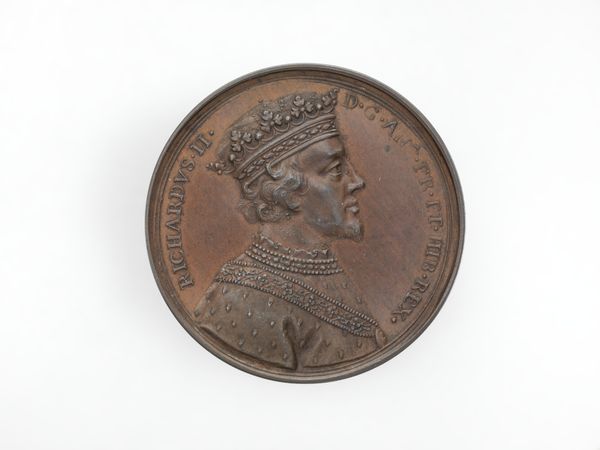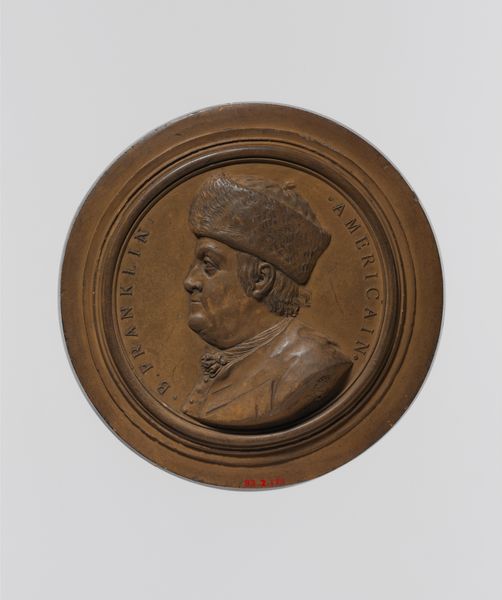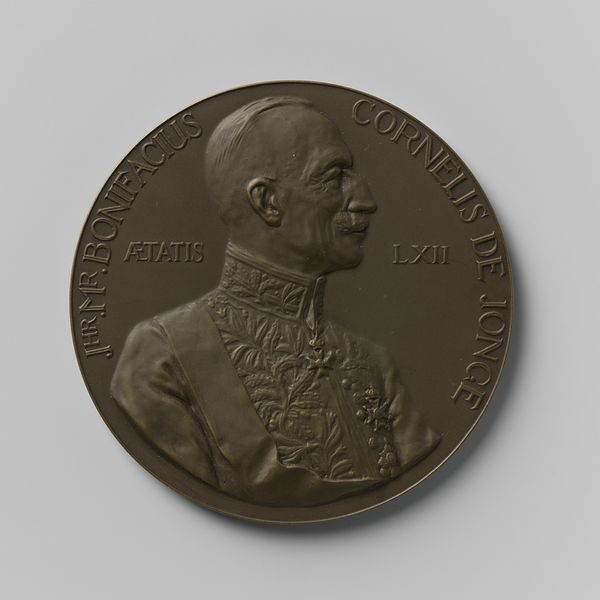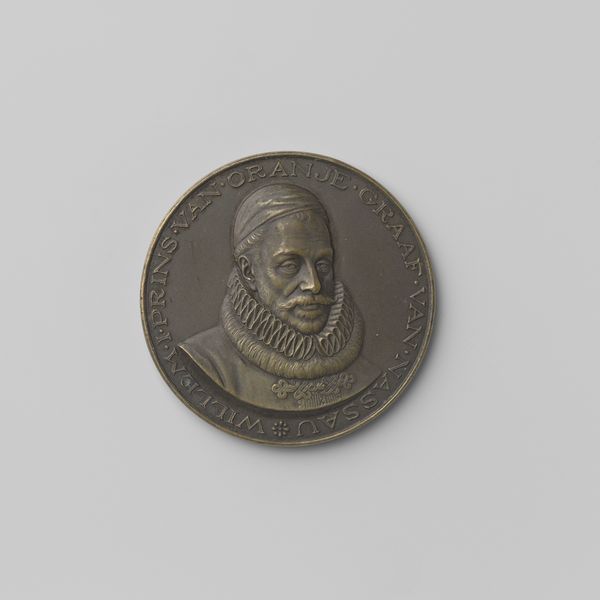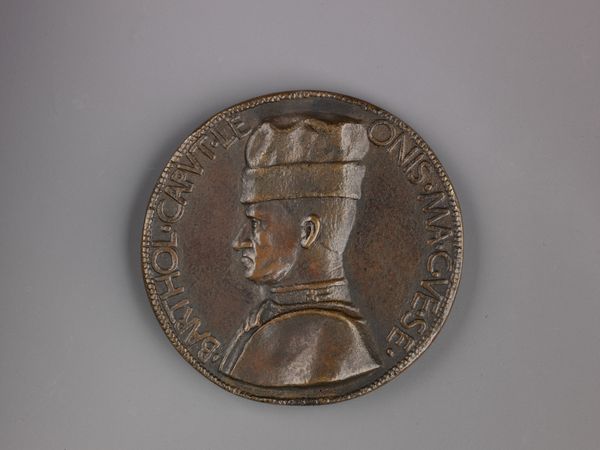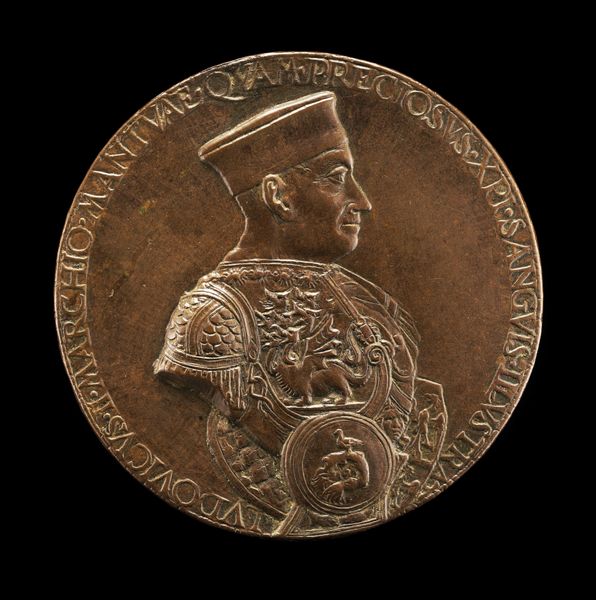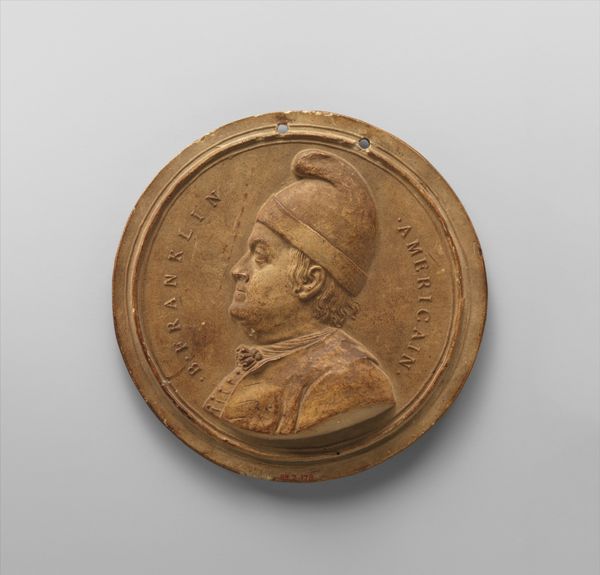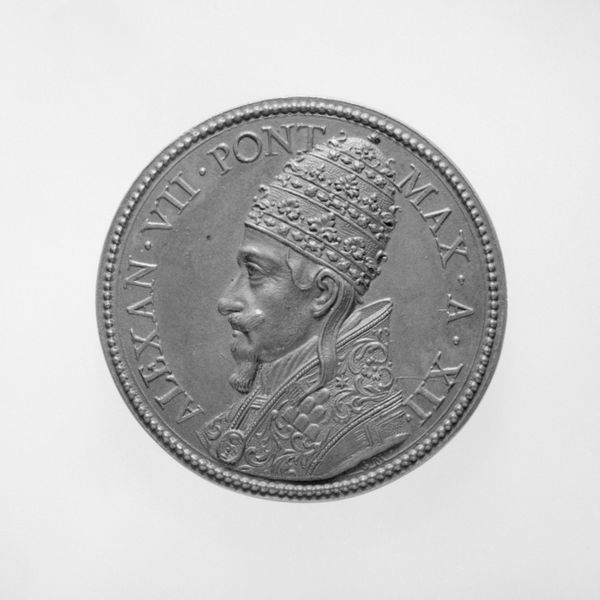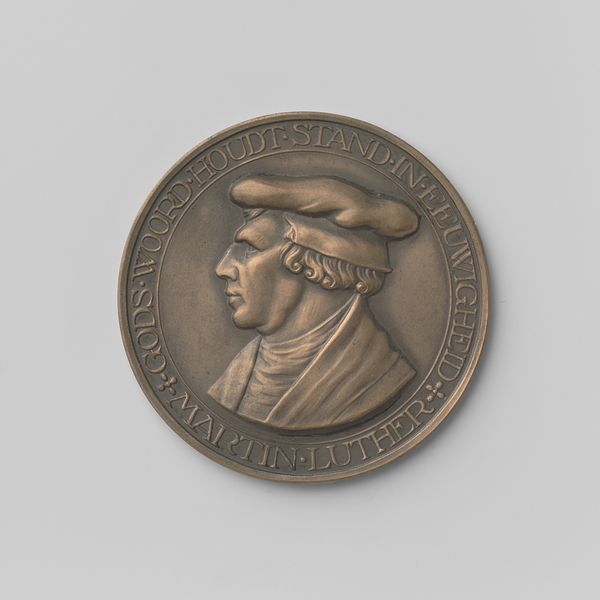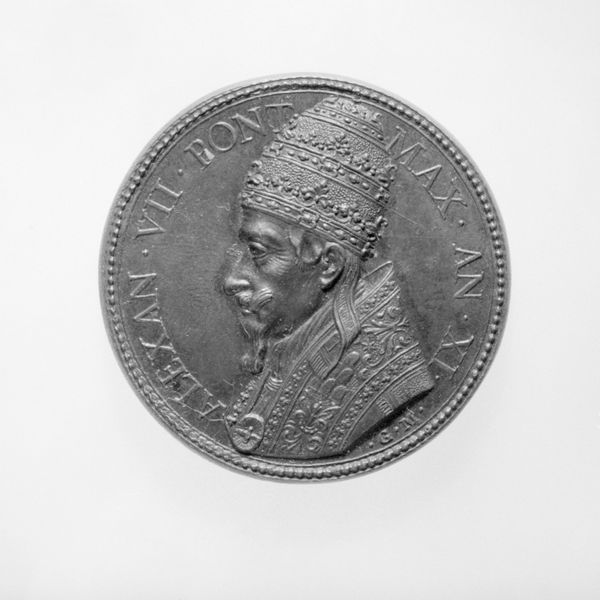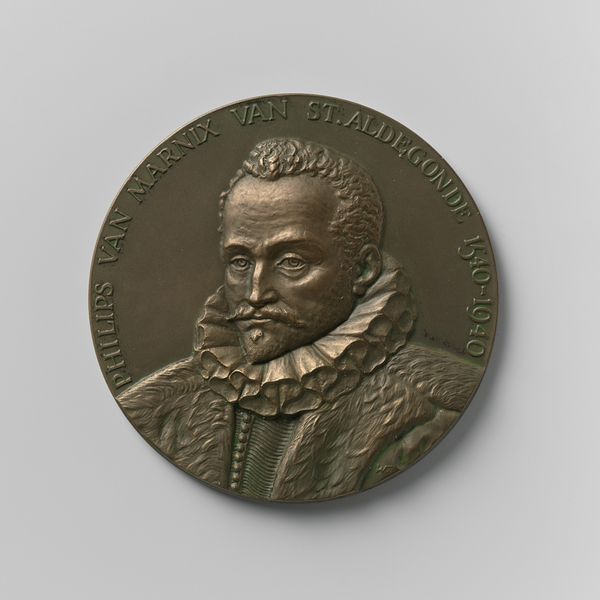
In Memory of the Visit of the Shah of Persia to the City of London, June 20, 1873 1873
0:00
0:00
Dimensions: Diam. 76 mm.
Copyright: Public Domain
Editor: Here we have "In Memory of the Visit of the Shah of Persia to the City of London, June 20, 1873", created in 1873 by Alfred Benjamin Wyon. It’s crafted from bronze and currently resides at The Metropolitan Museum of Art. It's quite striking, almost like a commemorative coin, but far grander in scale and detail. How do you interpret this work, looking at it through your lens? Curator: I'm immediately drawn to the bronze. Its very materiality speaks volumes about production and power. The medal’s creation commemorates a visit – but think about the labor involved. The mining of the ore, the casting process, the skill of the die cutter - Wyon - himself. It represents more than a diplomatic encounter, it signifies a network of labour, industry and empire. Editor: So you’re suggesting the bronze itself is part of the narrative? That’s a cool perspective. I’d been focusing on the portraiture aspect. Curator: Precisely! And the portraiture, in this instance, becomes tied to industrial prowess. What was Britain showcasing through this kind of commissioned work? Not just artistic talent, but economic and material strength too. This medal served as both a memento of the Shah's visit and a subtle declaration of Britain’s own capabilities. Does that reframe the purpose in your mind? Editor: It does, completely. It makes me consider the role of art beyond just aesthetics, thinking about what went into making it, not just what it represents on the surface. It shows art serving political and economic ends. Curator: Exactly. The neoclassical style can be seen in this light, too. By referencing classical forms, is Britain positioning itself within a historical continuum of powerful empires, or merely celebrating an important state event? The creation and distribution of pieces like this shaped public opinion. Editor: Wow, that gives me a lot to think about! I didn’t appreciate how the material and making of something could be so integral to understanding its meaning. Thanks for broadening my perspective! Curator: It works the other way. These conversations remind me of how the traditional object gives tangible expression to abstract socioeconomic patterns.
Comments
No comments
Be the first to comment and join the conversation on the ultimate creative platform.
